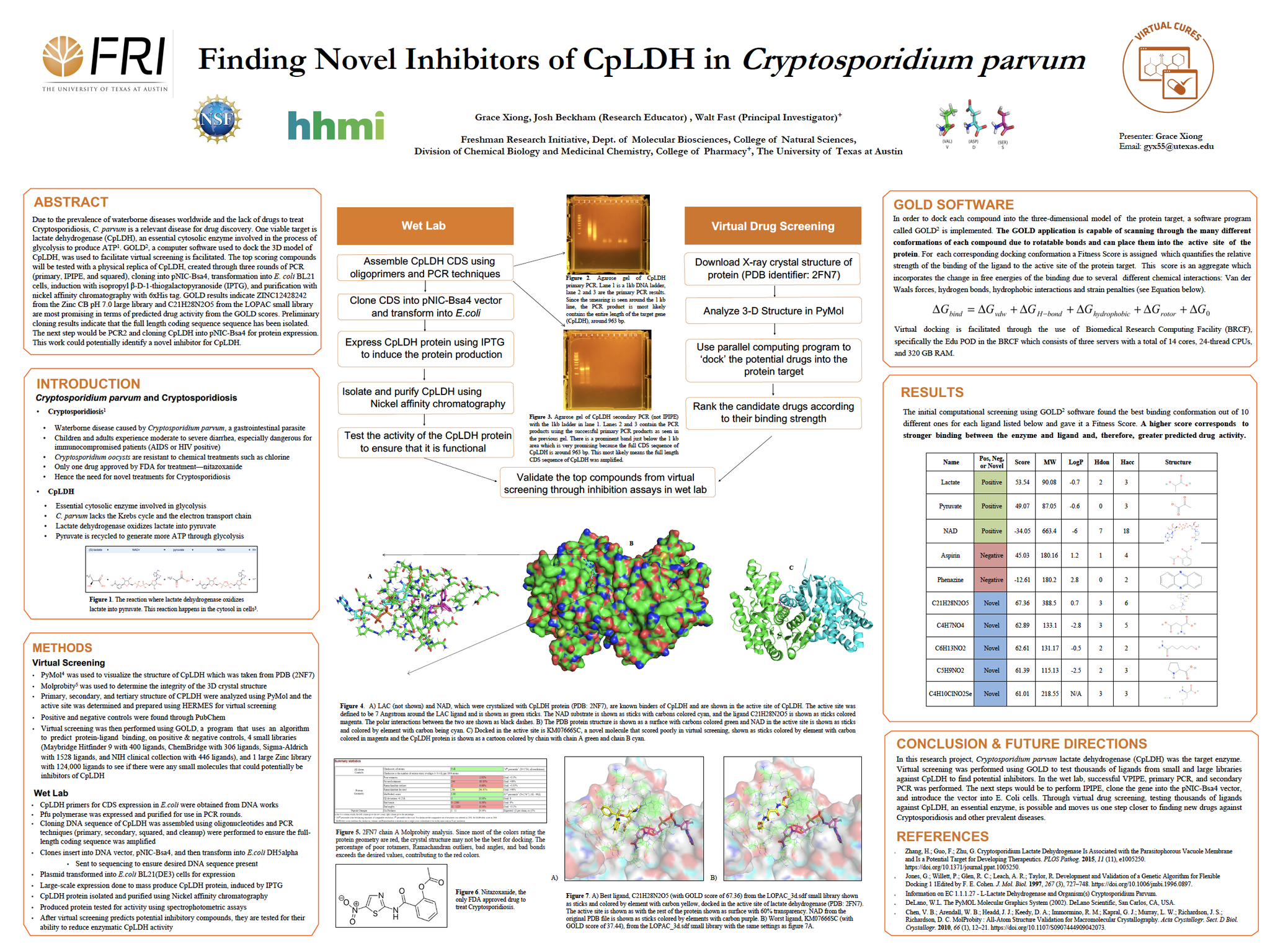Drug Discovery of Cryptosporidium parvum
Abstract for National Conference of Undergraduate Research (April 2021), University of Texas Undergraduate Research Forum (April 2020), and 123rd annual Texas Academy of Science Meeting (February 2020)

Image above: Poster submitted to the same three undergraduate research conferences
Cryptosporidium parvum, a gastrointestinal parasite, causes cryptosporidiosis, a waterborne disease. Due to the prevalence of waterborne diseases worldwide and the lack of drugs to treat cryptosporidiosis with only one FDA drug, nitazoxanide, approved, it is a relevant disease for drug discovery. One viable target within C. parvum is lactate dehydrogenase (CpLDH), an essential cytosolic enzyme involved in the process of glycolysis to produce ATP. GOLD, a computer software used to dock the 3D model of CpLDH, was used to facilitate virtual screening. The top-scoring compounds will be tested with a physical replica of CpLDH, created through three rounds of PCR (primary, IPIPE, and squared), cloning into pNIC-Bsa4, transformation into E. Coli BL21 cells, induction with isopropyl β-D-1-thiogalactopyranoside (IPTG), and purification with nickel affinity chromatography with 6xHis tag. GOLD results indicate ZINC12428242 from the Zinc CB pH 7.0 large library and C21H28N2O5 from the LOPAC small library are most promising in terms of predicted drug activity from the GOLD scores. Preliminary cloning results indicate that the full-length coding sequence has been isolated. The next step would be PCR squared and cloning CpLDH into pNIC-Bsa4 for protein expression. This work could potentially identify a novel inhibitor for CpLDH.
Post a comment